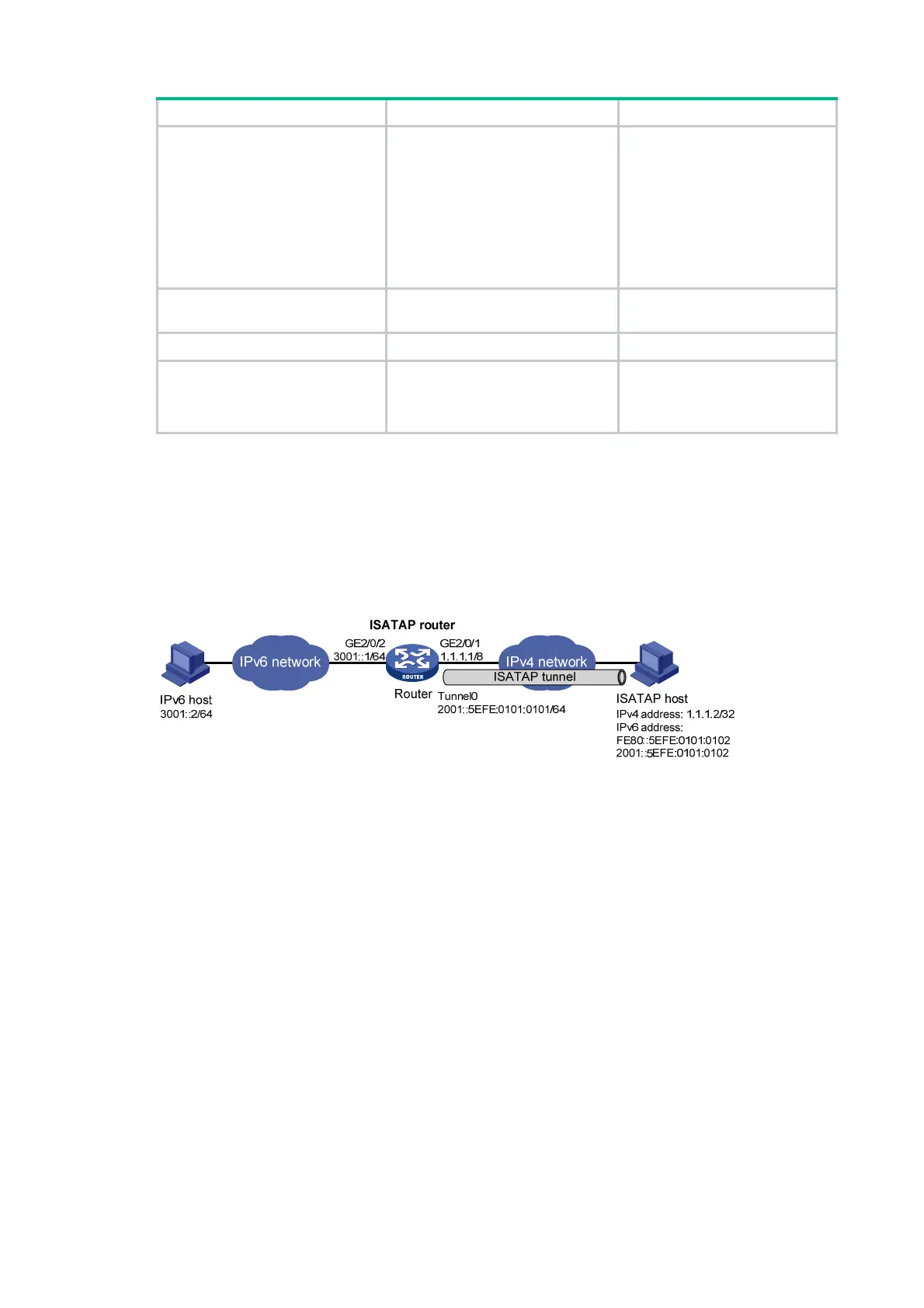328
Step Command Remarks
tunnel interface. interface-type interface-number } source interface is configured for
the tunnel interface.
If you specify a source address,
it is used as the source IP
address of tunneled packets.
If you specify a source interface,
the primary IP address of this
interface is used as the source
IP address of tunneled packets.
5. (Optional.) Set the DF bit for
tunneled packets.
tunnel dfbit enable
By default, the DF bit is not set
for tunneled packets.
6. Return to system view.
quit
N/A
7. (Optional.) Enable dropping
IPv6 packets that use
IPv4-compatible IPv6
addresses.
tunnel discard
ipv4-compatible-packet
By default, IPv6 packets that use
IPv4-compatible IPv6 packets
are not dropped.
Configuration example
Network requirements
As shown in Figure 128, configure an ISATAP tunnel between the router and the ISATAP host so the
ISATAP host in the IPv4 network can access the IPv6 network.
Figure 128 Network diagram
Configuration procedure
• Configure the router:
# Specify an IPv6 address for GigabitEthernet 2/0/2.
<Router> system-view
[Router] interface gigabitethernet 2/0/2
[Router-GigabitEthernet2/0/2] ipv6 address 3001::1/64
[Router-GigabitEthernet2/0/2] quit
# Specify an IPv4 address for GigabitEthernet 2/0/1.
[Router] interface gigabitethernet 2/0/1
[Router-GigabitEthernet2/0/1] ip address 1.1.1.1 255.0.0.0
[Router-GigabitEthernet2/0/1] quit
# Create the ISATAP tunnel interface Tunnel 0.
[Router] interface tunnel 0 mode ipv6-ipv4 isatap
# Specify an EUI-64 IPv6 address for the tunnel interface.
[Router-Tunnel0] ipv6 address 2001:: 64 eui-64
# Specify GigabitEthernet 2/0/1 as the source interface of the tunnel interface.
